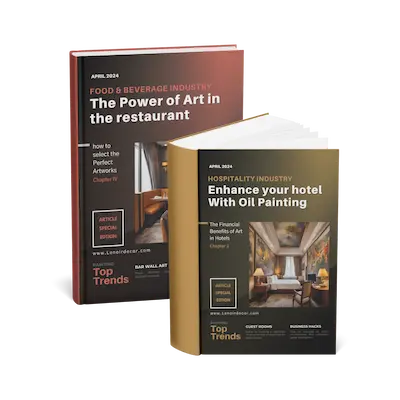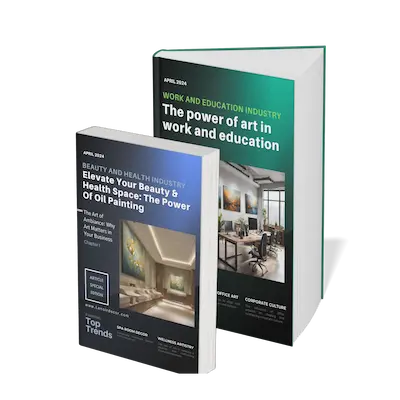Oil painting, with its rich history and versatile nature, offers artists a vast playground for creative expression. An oil painting medium is designed to alter the viscosity, surface finish, or drying time of oil paint. A crucial element in harnessing the full potential of oil paints lies in understanding and skillfully employing oil painting mediums. One of the most useful characteristics is the ability of an oil to reduce the consistency of paint, without significantly compromising colour strength. This comprehensive guide explores the art mediums definition, delves into the diverse world of art different mediums used in oil painting, provides an extensive art mediums list with practical art mediums examples, and offers in-depth guidance on how to use them effectively. We'll also touch on essential oil painting supplies, explore various oil painting techniques, and address specific questions like painting oil on canvas for beginners, painting oil over latex, painting with water mixable oils, painting with oil sticks, and painting with oil on paper. Oil painting mediums main aims are to alter viscosity, surface finish or drying time of oil paint, and through this, you can achieve a variety of sheens and either extend or shorten the drying time of the paint. Speeding up the drying time of oil paints can have some drawbacks.

1. Understanding Art Mediums: Definition and Purpose

Art mediums definition in the context of oil painting refers to the substances added to oil paint to modify its properties. These modifications can include altering the paint's consistency, drying time, gloss, transparency, and even its texture. This medium is best for oil painters who want to speed up the drying process as this medium will speed up the drying time, as well as reducing the glossiness of the painting. Low odour thinners have the same quick-drying properties as turpentine or white spirit, and if you want to speed up the drying process you can mix with linseed oil. Understanding art different mediums is fundamental for any oil painter, from beginners to seasoned professionals. Mediums empower artists to control the behavior of oil paint, allowing them to achieve a wide range of artistic effects, from delicate glazes to impasto textures. They are essential tools for manipulating the paint to realize the artist's vision. Any varnish made from turpentine with copal, damar, or mastic may be used as a glazing medium for oils, and will dry rapidly and to a gloss. Some mediums thin out the paint while other mediums, such as liquid Impasto, can thicken the paint and hold brush marks. Some mediums include substances that further accelerate drying, useful if you like to paint impasto and can't rely upon the oxidization of thin paint layers.
2. Exploring the Diverse Art Mediums List

The art mediums list for oil painting is extensive, offering a plethora of options for artists to explore. Here are some common and essential art mediums examples:
- Linseed Oil: A classic and widely used medium derived from flax seeds. It increases gloss, slows drying time, and improves flow. Refined linseed oil, stand oil, and sun-thickened oil are variations, each offering slightly different properties. It's a staple in any collection of oil painting supplies.
- Turpentine/Odorless Mineral Spirits: These solvents are used to thin paint, clean brushes, and create washes. Odorless mineral spirits are preferred for health reasons, minimizing exposure to volatile organic compounds. It's crucial to distinguish between artist-grade and industrial-grade solvents, as the latter can be detrimental to the paint film.
- Stand Oil: A thickened linseed oil that creates a smooth, enamel-like finish. It reduces brushstrokes and is often used in glazing and blending techniques. It adds a subtle sheen and is less prone to yellowing than some other oils. Oil does not hold brush strokes well, however, so it's best for areas you want to remain thin, flat, and texture-free, like dark backgrounds. Glaze mediums, alkyd mediums, or oils will all do this.
- Damar Varnish: A natural resin dissolved in turpentine, used to add gloss and increase transparency. It's often used in glazing and as a final varnish (though synthetic varnishes are now more common for final coats).
- Alkyd Mediums: These synthetic resins accelerate drying time and improve flow. They are useful for working in layers quickly and can also increase the paint's durability. They are a good option for underpainting or for artists who prefer a faster drying process.
- Painting Oils (e.g., Poppy Oil, Safflower Oil, Walnut Oil): These oils offer different drying rates and yellowing properties compared to linseed oil. Poppy oil, for example, dries slower and yellows less than linseed, while safflower oil is often used for whites and light colors. Walnut oil has similar properties to poppy oil.
- Resin Oils: These are combinations of oil and resin, offering specific properties depending on the resin used. They can add gloss, improve flow, and increase the durability of the paint film.
3. Mastering Oil Painting Techniques with Mediums

Oil painting techniques are intricately linked to the mediums employed. Here are some examples:
- Glazing: This technique involves applying thin, transparent layers of paint over a dry underpainting. Mediums are essential for glazing, increasing the transparency of the paint, and creating luminous, layered effects. A mixture of oil and solvent is often used. Adding solvent creates the risk of making your paint underbound, meaning some oil will be washed from around pigment particles, creating a weak paint film.
- Impasto: This technique involves applying paint thickly, often with a palette knife. Mediums can be used to add bulk and texture to the paint, creating a three-dimensional effect. Some mediums are specifically formulated for impasto, adding body and preventing the paint from wrinkling. The dramatically raised edges of these marks came from mixing an impasto medium with oil paint and applying the paint on canvas with a painting knife.
- Blending: Achieving smooth transitions between colors requires careful use of mediums. Mediums can extend the "open time" of the paint, allowing for easier blending and softening of edges. A slow-drying oil can be beneficial for blending.
- Underpainting: This initial layer of the painting often benefits from thinned paint. A mixture of solvent and a small amount of oil is often used.
- Grisaille: This technique uses shades of gray for the underpainting. Mediums are used to control the flow and drying time.
4. Oil Painting on Canvas for Beginners: Mediums and Tips

Painting oil on canvas for beginners can be made significantly easier by understanding the role of mediums. A good starting point is using a mixture of odorless mineral spirits and linseed oil (or a premixed painting medium) to thin the paint for the initial layers. A lean-to-fat approach is crucial (more solvent in the initial layers, more oil in subsequent layers) to ensure a stable paint film. This creates a smoother application, allows for easier corrections, and prevents cracking. Over-painting fat mediums with leaner, quicker-drying paint mixtures should be avoided as the fat medium will slowly expand as it cures, pulling apart the leaner layer above that has already formed a hard film, causing cracking. Beginners should avoid using too much medium, as this can make the paint overly runny and difficult to control. A paint medium is essentially a substance that is added to paint to alter its properties, such as the way the color appears and behaves - allowing you to customize your paint to perform in the desired way. Paint can be altered to have anywhere from a matt surface finish, through a range of satin sheens, to a high gloss finish. It's worth noting at this point that if, for example, a medium were used to modify the consistency of the paint but the resulting surface finish is undesirable, then a varnish can be used at a later stage to change this.
5. Addressing Specific Oil Painting Scenarios
- Painting Oil Over Latex: This is generally not recommended. Oil paint does not adhere well to latex and may crack or peel over time. If you must paint over latex, use a specialized primer designed for this purpose.
- Painting with Water Mixable Oils: These oils can be thinned with water, reducing the need for traditional solvents. However, specific water-mixable oil mediums are available and recommended for optimal results. Do not mix water-mixable oils with traditional oil paints or mediums.
- Painting with Oil Sticks: Oil sticks are oil paint in a solid form. They can be used directly or thinned with traditional oil painting mediums. They offer a convenient way to create expressive marks and textures.
- Painting with Oil on Paper: Special oil painting paper or paper primed with gesso is required. Mediums can be used to control the absorbency of the paper and prevent the oil from soaking through. A sizing agent may also be necessary. The chalk gesso ground also absorbs a lot of oil and increases drying speed for lower layers.
6. Choosing the Right Medium: A Guide for Artists
Selecting the appropriate medium depends on the desired effect and the specific oil painting techniques employed. Consider the following factors:
- Drying Time: Some mediums, like alkyd mediums, accelerate drying, while others, like poppy oil, slow it down.
- Gloss: Mediums can affect the gloss level of the finished painting, ranging from matte to high gloss.
- Consistency: Mediums can thin or thicken the paint, impacting its flow and handling.
- Transparency: Certain mediums increase the transparency of the paint, making them ideal for glazing.
- Yellowing: Some oils, like linseed, can yellow over time. Artists concerned about yellowing may opt for other oils like safflower or walnut. There are several other kinds of oil that can be used in oil painting: Safflower oil is sometimes used when making white paint because it is less yellow than linseed oil.
By carefully considering these factors and experimenting with different mediums, artists can unlock a world of possibilities and create truly unique and expressive works of art. Use caution when using mediums in oil painting and to follow all safety precautions to avoid the risk of accidents. Whether you are a beginner exploring painting oil on canvas for beginners or an experienced artist seeking to refine your oil painting techniques, a solid understanding of art mediums will undoubtedly enrich your artistic journey. Always use high-quality oil painting supplies and prioritize safety by working in a well-ventilated area when using solvents. Keep detailed notes on your medium mixtures and their effects to build your own personal library of knowledge and refine your practice.






